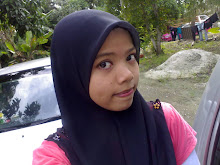THE DIFFERENCES BETWEEN ETHICS AND LAW
DEFINITION OF ETHICS
In general, ethics is a moral philosophy where a person makes a specific moral choice and sticks to it. On the other hand, ethics in computing means moral guidelines to refer to when using the computer and computer networks. This includes the Internet.
DEFINITION OF LAW
Law is a legal system comprising of rules and principles that govern the affairs of a community and controlled by a political authority. Law differs from one country to another. In the era of technology, computer law is needed to clarify goods or actions that fall under the computer law. Computer law refers to all areas in law that requires an understanding of computer technology such as hardware, software and Internet. Examples of laws of computing in Malaysia include the Malaysian Communication and Multimedia Act, the Computer Crime Act 1997 and the Telemedicine Act 1997.
WHY DO WE NEED ETHICS AND LAW IN COMPUTING?
• Respecting Ownership
• Respecting Privacy
• Respecting Property
RESPECTING OWNERSHIP
We must respect ownership by not stealing other people’s work either by duplicating or distributing it. Duplicating and distributing copies of audio tapes, video tapes and computer programs without permission and authorization from the individual or company that created the program are immoral and illegal.
RESPECTING PRIVACY AND CONFIDENTIALITY
We should respect other people's privacy and confidentiality by refraining ourselves from reading their mails or files without their permission. If we do so, it is considered as violating an individual’s rights to privacy and confidentiality.
RESPECTING PROPERTY
Property here means ownership. Since an individual data and information are considered as property, therefore, an act of tampering and changing electronic information is considered as vandalism and disrespect for other people’s property.
SIMILARITIES BETWEEN ETHICS AND LAW
Both ethics and law are complimentary to each other and are made:
• to guide user from misusing computers
• to create a healthy computer society, so that computers are used to contribute to a better life
• to prevent any crime
DIFFERENCES BETWEEN ETHICS AND LAWS
ETHICS
GUIDELINE - As a guideline to computer users.
MORAL STANDARDS - Ethical behavior is judged by moral standards.
FREE TO FOLLOW - Computer users are free to follow or ignore the code of ethics.
NO PUNISHMENTS - No punishment for anyone who violates ethics.
UNIVERSALS - Universal, can be applied anywhere, all over the world.
PRODUCE ETHICAL COMPUTER USERS - To produce ethical computer users.
IMMORAL - Not honoring computer ethics means ignoring the moral elements (immoral).
LAW
CONTROL - As a rule to control computer users.
JUDICIAL STANDARDS - Law is judged by judicial standards.
MUST FOLLOW - Computer users must follow the regulations and law.
PENALTIES, IMPRISONMENTS AND OTHER PUNISHMENTS - Penalties, imprisonments and other punishments for those who break the law.
DEPENDS ON COUNTRY - Depends on country and state where the crime is committed.
PREVENT MISUSING OF COMPUTERS - To prevent misuse of computers.
CRIME - Not honoring the law means committing a crime.
UNETHICAL VS. LAW BREAKING CONDUCTS
Unethical:
• using the office computer to do personal things
• reading your friend’s e-mail without his or her permission
• plagiarising and using materials from the Internet for your class assignment without giving credit to the original author.
Law breaking:
• sending a computer virus via e-mail
• hacking into your school’s database to change your examination results.
• selling pirated software in a night market















